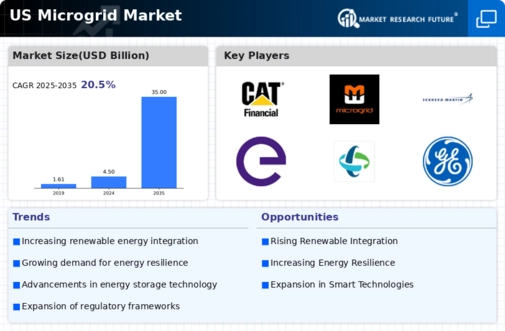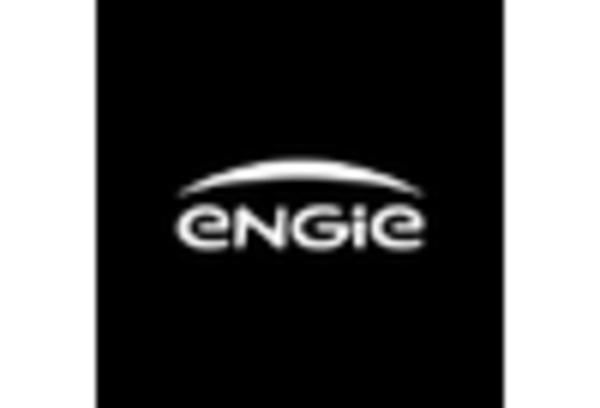Supportive Regulatory Environment
the microgrid as-a-service market benefits from a supportive regulatory environment in the US. Policymakers are increasingly recognizing the importance of decentralized energy systems and are implementing frameworks that encourage the development and deployment of microgrid technologies. Incentives such as tax credits, grants, and favorable interconnection policies are being introduced to stimulate investment in microgrid solutions. Recent legislative measures have aimed to streamline the permitting process for microgrid projects, making it easier for stakeholders to implement these systems. This regulatory support is crucial for the growth of the microgrid as-a-service market, as it reduces barriers to entry and fosters innovation. As the regulatory landscape continues to evolve, it is likely to further enhance the attractiveness of microgrid solutions for a diverse range of users.
Growing Demand for Energy Resilience
the microgrid as-a-service market experiences a notable surge in demand for energy resilience among various sectors, particularly in the US. Organizations are increasingly recognizing the importance of reliable energy sources to mitigate risks associated with power outages and disruptions. This trend is particularly pronounced in critical infrastructure sectors such as healthcare and emergency services, where uninterrupted power supply is essential. According to recent data, nearly 70% of businesses in the US have reported that energy resilience is a top priority, driving investments in microgrid solutions. The microgrid as-a-service market is positioned to capitalize on this demand, offering tailored solutions that enhance energy security and reliability. As more entities seek to fortify their energy systems, the market is likely to expand, reflecting a shift towards decentralized energy management and increased reliance on microgrid technologies.
Cost-Effectiveness of Microgrid Solutions
the microgrid as-a-service market appeals due to the cost-effectiveness of its solutions. Businesses and municipalities are recognizing that traditional energy sources often come with high operational costs and volatility. In contrast, microgrid systems can provide a more stable and predictable cost structure. Recent analyses indicate that organizations can save up to 30% on energy costs by implementing microgrid solutions, particularly when integrating renewable energy sources. This financial incentive is driving the adoption of microgrid as-a-service offerings, as stakeholders seek to optimize their energy expenditures. Furthermore, the ability to avoid peak demand charges and reduce reliance on grid electricity enhances the economic viability of microgrids. As the market continues to evolve, the emphasis on cost savings is likely to remain a key driver, encouraging further investment in microgrid technologies.
Increased Focus on Sustainability Initiatives
the microgrid as-a-service market sees a heightened focus on sustainability initiatives across various sectors in the US. Organizations are increasingly prioritizing environmental responsibility and seeking ways to reduce their carbon footprints. This shift is driving the adoption of microgrid solutions that facilitate the integration of renewable energy sources, such as solar and wind power. Recent surveys indicate that over 60% of companies in the US are actively pursuing sustainability goals, which often include transitioning to cleaner energy systems. The microgrid as-a-service market is well-positioned to support these initiatives by providing flexible and scalable energy solutions that align with sustainability objectives. As the demand for environmentally friendly energy options continues to grow, the market is likely to expand, reflecting a broader commitment to sustainable practices.
Technological Advancements in Energy Management
Technological advancements are playing a pivotal role in shaping the microgrid as-a-service market. Innovations in energy management systems, battery storage technologies, and smart grid solutions are enhancing the efficiency and reliability of microgrid operations. For instance, the integration of artificial intelligence and machine learning algorithms allows for real-time monitoring and optimization of energy usage, which can lead to improved performance and reduced operational costs. As these technologies become more accessible, the microgrid as-a-service market is likely to benefit from increased adoption rates. Furthermore, the US government has been actively promoting research and development in energy technologies, which may further accelerate the growth of this market. The convergence of these technological advancements with the growing need for sustainable energy solutions suggests a promising future for the microgrid as-a-service market.

















Leave a Comment